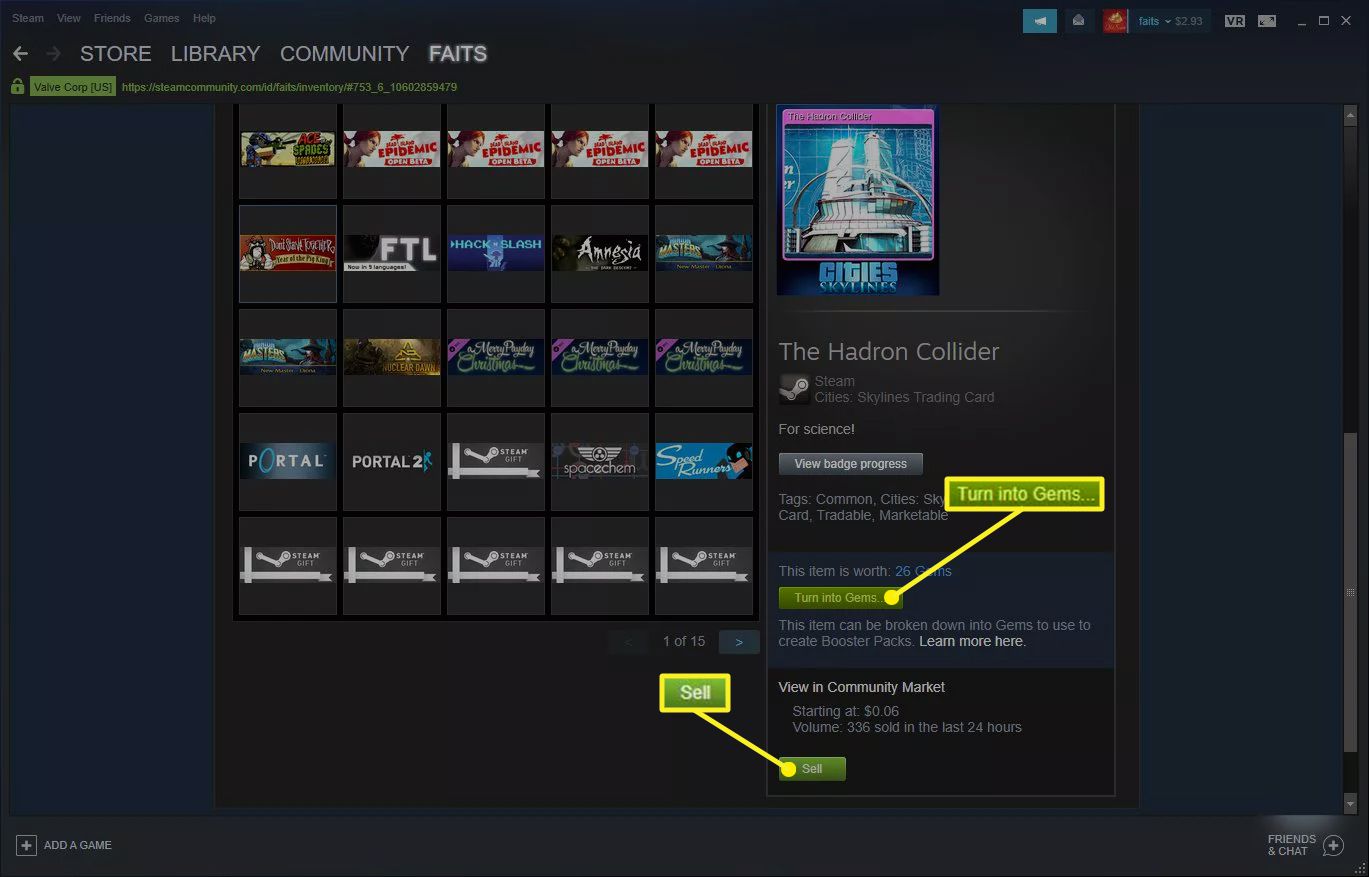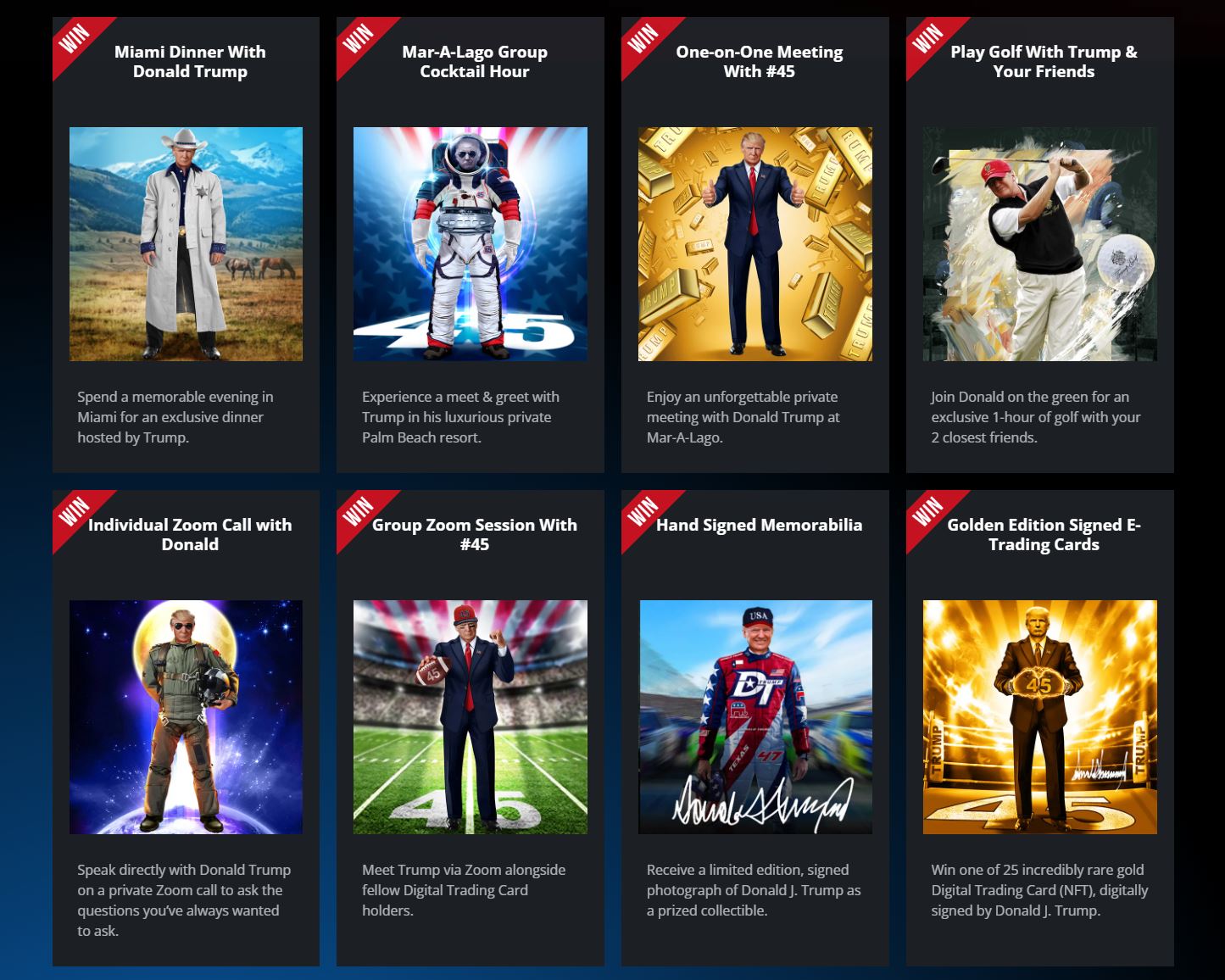Introduction
Welcome to the exciting world of selling trading cards online! Whether you’re a collector looking to clear some space in your collection or a savvy entrepreneur looking to make some extra cash, selling trading cards can be a rewarding and profitable venture. With the rise of online marketplaces and the growing interest in trading card games, now is the perfect time to tap into this market.
However, selling trading cards online can be a daunting task, especially if you’re new to the process. That’s why we’ve put together this comprehensive guide to help you navigate the ins and outs of selling trading cards online.
In this guide, we’ll cover everything from choosing the right platform to researching the market, pricing your cards, and providing excellent customer service. By following these steps, you’ll be well-equipped to successfully sell your trading cards online and maximize your profits.
Whether you have a collection of Pokémon cards, Magic: The Gathering cards, or any other popular trading card game, the strategies in this guide are applicable to all types of trading cards. So, let’s dive in and unlock the secrets to successfully selling trading cards online!
Choose the Right Platform
The first step in selling trading cards online is to choose the right platform to showcase and sell your merchandise. With a plethora of online marketplaces available, it’s important to find a platform that caters to your target audience and offers the features you need.
Consider the following factors when choosing a platform:
- Popularity: Opt for a platform that has a large user base and high traffic. This will increase the chances of your listings being seen by potential buyers.
- Specialization: Some platforms cater specifically to trading card enthusiasts, providing a dedicated space for buyers and sellers to connect. These platforms may offer specialized features and tools that enhance the trading card selling experience.
- Fees: Understand the fees associated with selling on each platform. Some platforms charge listing fees, transaction fees, or a percentage of the sale price. Consider these fees and compare them to the value you’ll receive from the platform.
- Ease of Use: Look for a platform that is user-friendly and intuitive. You’ll want to spend your time selling and interacting with customers, not struggling to navigate a complicated interface.
- Security: Ensure that the platform has robust security measures in place to protect both buyers and sellers. This includes authentication processes and safeguards against fraudulent activities.
Popular online marketplaces such as eBay and Amazon can be great options for selling trading cards. These platforms have a massive user base and offer tools to facilitate smooth transactions. Alternatively, if you’re selling specific types of trading cards like sports cards, you may consider platforms like COMC or Beckett Marketplace that specialize in those categories.
Remember, it’s essential to research and compare platforms before making a decision. Read reviews, check the platform’s policies, and explore the features they offer. By choosing the right platform, you’ll maximize your chances of reaching the right audience and successfully selling your trading cards online.
Research the Market
Before diving into selling your trading cards online, it’s vital to research the market to understand the demand, trends, and pricing for your cards. This step is crucial in determining the value of your cards and setting competitive prices that attract potential buyers.
Here are some tips for researching the market:
- Evaluate Card Rarity: Determine the rarity of your trading cards by checking the card set, edition, and any special features it may have. Rare or limited-edition cards often hold more value and can be priced higher.
- Check Recent Sales: Look for recent sales of similar trading cards on online marketplaces or auction sites. This will give you an idea of the going market rate for your cards.
- Consider Grading: If you have valuable or high-quality cards, consider getting them professionally graded. Graded cards are often worth more in the market, as they provide a standardized evaluation of the card’s condition.
- Follow Trends: Stay updated with the latest trends in the trading card market. Certain cards or sets may experience a surge in popularity due to events, tournaments, or new releases. Capitalize on these trends by adjusting your prices accordingly.
- Join Trading Card Communities: Engage with online communities, forums, or social media groups dedicated to trading cards. These platforms are an excellent source of information, and interacting with fellow collectors or sellers can provide valuable insights into the market.
By conducting thorough market research, you’ll be able to determine the true value of your trading cards and price them competitively. Remember to strike a balance between setting a fair price for yourself and attracting potential buyers.
It’s important to note that the market for trading cards can fluctuate, so periodically reevaluate your pricing strategy to stay in line with current trends and demand. By staying informed and adapting to market changes, you’ll increase your chances of successfully selling your trading cards online.
Price Your Trading Cards
Pricing your trading cards accurately is crucial to attract potential buyers and ensure a successful sale. Setting the right price requires finding a balance between maximizing your profit and offering a competitive price in the market.
Consider the following factors when pricing your trading cards:
- Condition: The condition of your trading cards plays a significant role in determining their value. Cards in excellent condition, with no visible wear or damage, will typically command a higher price than cards in poor condition.
- Rarity and Demand: Take into account the rarity and demand for your cards. Rare cards or those in high demand will generally have a higher value, allowing you to set a higher price.
- Market Research: Refer to your market research to get an idea of the going rates for similar trading cards. Look at recent sales and listings to understand the price range you should target.
- Competitive Pricing: While it’s important to set a price that reflects the value of your cards, remember that buyers are also looking for competitive deals. Consider pricing your cards slightly below the average market value to attract potential buyers.
- Bundling and Discounts: If you have multiple cards from the same set or series, consider bundling them together in a lot. This can increase the overall value and make your listings more attractive. You can also offer discounts or promotions to encourage buyers to make a purchase.
When listing your trading cards online, provide detailed descriptions and mention any unique or notable features of the cards. Be transparent about the condition of the cards, as buyers appreciate honesty and accurate representations.
Additionally, be open to negotiation and offers from potential buyers. Some buyers might be interested in purchasing your cards in bulk or at a lower price. Evaluate each offer and decide if it aligns with your pricing strategy and goals.
Remember to periodically reassess your pricing strategy based on market trends and fluctuations, as well as the response and feedback you receive from buyers. Flexibility and adaptability are key to finding the right price for your trading cards and maximizing your chances of a successful sale.
Take High-Quality Photos
When selling trading cards online, high-quality photos are essential in capturing the attention of potential buyers and showcasing the details of your cards. A clear and visually appealing image can make a significant difference in the success of your listings.
Follow these tips to take high-quality photos of your trading cards:
- Use Sufficient Lighting: Natural light is often the best option for capturing accurate colors and details. Choose a well-lit area near a window or use indirect lighting to minimize shadows and reflections.
- Steady Hands or Tripod: Stability is crucial to capture sharp and focused images. Use a tripod or steady your hands against a stable surface to avoid blurriness.
- Macro or Close-Up Mode: Take advantage of your camera’s macro or close-up mode to capture intricate details of the trading cards. This mode allows for close focusing, ensuring the text and artwork on the cards are clear and legible.
- Plain Background: Use a clean and non-distracting background for your photos. A plain surface, such as a solid-colored tablecloth or a neutral-colored backdrop, will help your trading cards stand out in the images.
- Multiple Angles: Include photos from various angles to give buyers a comprehensive view of the card’s condition and features. Show both the front and back of the card, highlighting any special attributes.
- Focus on Details: Pay attention to capturing important details, such as holographic effects, foil elements, or any unique characteristics of the trading cards. These details can make your listings more appealing to potential buyers.
- Avoid Glare and Reflections: Position your cards in such a way that there are no undesirable glare or reflections. Adjust the lighting or angles as needed to eliminate any unwanted distractions.
- Edit and Enhance: After capturing the photos, edit them using photo editing tools to enhance brightness, contrast, and sharpness. Be careful not to overdo it, as you want the images to accurately represent the actual appearance of the cards.
Remember to create a separate listing, complete with high-quality images, for each trading card you’re selling. This allows buyers to clearly see the individual cards and make informed purchasing decisions.
By investing time and effort into taking high-quality photos, you’ll improve the overall presentation of your trading cards and increase the likelihood of attracting interested buyers.
Write an Accurate and Descriptive Listing
When creating a listing for your trading cards, it’s essential to provide accurate and detailed information about each card. A well-written description can help attract potential buyers and instill confidence in the quality and authenticity of the cards you’re selling.
Follow these tips to write an accurate and descriptive listing:
- Title: Craft a clear and concise title that includes the name of the trading card, the set it belongs to, and any notable features. This helps potential buyers quickly identify the card they’re interested in.
- Condition: Be honest and upfront about the condition of the card. Specify if it’s new, lightly played, or has any noticeable wear or damage. Including this information helps buyers assess the value of the card.
- Card Details: Provide specific details about the trading card, such as its rarity, edition, artist, and any special attributes. Mention the card’s abilities, stats, or any noteworthy trivia that may appeal to collectors or players.
- Authenticity: If your card is professionally graded or comes with a certificate of authenticity, highlight this in your listing. It adds credibility and reassurance to potential buyers.
- Describe Packaging: If the trading card is still in its original packaging, mention this in your description. Include details regarding the condition of the packaging, any signs of tampering, or if it’s sealed.
- Include Photos: Referencing the previous section, incorporate high-quality photos of the trading card in your listing. Images can provide visual confirmation of the card’s condition and features.
- Shipping and Packaging: Clearly outline your shipping policies, including the methods of shipping you offer and any additional fees associated with packaging or tracking. Provide estimated delivery times based on the buyer’s location.
- Return Policy: State your return policy to provide reassurance to potential buyers. Specify the conditions under which you accept returns and any time limits for requesting a return.
- Keyword Optimization: Include relevant keywords in your description to improve your listing’s visibility in search results. Focus on keywords related to the brand, series, character names, and any unique attributes of the trading card.
Write your listing in a clear and concise manner, using proper grammar, punctuation, and formatting. Avoid exaggerations or misleading claims, as this can harm your reputation as a trusted seller.
By providing accurate and detailed information, you’ll attract serious buyers who are genuinely interested in your trading cards. This increases the likelihood of successful sales and positive feedback for your seller profile.
Consider Selling in Sets or Lots
When selling trading cards online, offering your cards in sets or lots can be a strategic approach to attract potential buyers and maximize your sales. Selling multiple cards together can provide added value and create a more enticing offer for collectors and enthusiasts.
Consider the following benefits of selling in sets or lots:
- Increased Value: By bundling multiple cards together, you can increase the overall value of your offering. Buyers may be more willing to pay a higher price for a collection of cards rather than individual cards.
- Appeal to Collectors: Many collectors are interested in completing sets or acquiring a variety of cards from the same series. Selling in sets or lots can attract these collectors, who are more likely to purchase multiple cards at once.
- Convenience for Buyers: Offering sets or lots simplifies the buying process for customers. They don’t have to search for individual cards separately and can find a complete selection in one listing, saving time and effort.
- Clear Inventory: If you have duplicates or cards that are not as highly sought after individually, bundling them in sets or lots can help clear your inventory more efficiently.
- Price Flexibility: Selling in sets or lots allows for flexibility in pricing. You can offer discounts compared to individual card prices, making the deal more attractive to buyers.
When creating listings for sets or lots, clearly state the cards included and their quantities. Provide details about the condition of each card and highlight any standout or valuable cards within the set.
It’s important to strike a balance between including enough cards to bring value to the set or lot, while still offering a manageable price for potential buyers. Consider grouping cards of similar themes, series, or rarity levels to attract a focused target audience.
Additionally, clearly communicate the composition of the sets or lots in the listing’s title and description. This helps buyers quickly understand what they will be receiving and ensures transparency in the transaction.
Ultimately, offering sets or lots can broaden your potential customer base, increase the overall value of your offerings, and help you sell your trading cards more efficiently.
Ship Your Cards Safely
Once you’ve sold your trading cards online, it’s crucial to ensure they are packaged and shipped safely to the buyer. Proper packaging and secure shipping methods not only protect your cards from damage but also promote a positive buying experience for the customer.
Follow these tips to ship your cards safely:
- Protective Sleeves and Top Loaders: Place each trading card in a protective sleeve to prevent scratches or smudges. For added protection, insert the sleeved cards into top loaders, which are rigid plastic holders that keep the cards flat and safeguard against bending or damage during transit.
- Use Cardboard or Bubble Mailers: Place the sleeved and top-loaded cards in a cardboard or bubble mailer to provide additional protection against impact. Make sure the mailer is sturdy and properly sealed to prevent the cards from moving around during shipping.
- Fragile Label: Clearly mark the package as “fragile” to alert postal carriers and handlers to handle it with care. This helps reduce the risk of mishandling or rough treatment during transit.
- Shipping Insurance and Tracking: Consider purchasing shipping insurance for high-value cards to protect against loss or damage in transit. Additionally, use a shipping method that provides tracking information, allowing both you and the buyer to monitor the package’s progress.
- Double Check Addresses: Ensure that the shipping address provided by the buyer is accurate and up to date. Verify the address before shipping to avoid any delivery issues or packages being returned to you.
- Clear Packaging Instructions: Include clear instructions in your listing or communicate with the buyer about your packaging methods. Let them know how you will secure the cards and what they can expect when receiving the package.
- Communicate with Buyers: Keep open communication with the buyer during the shipping process. Provide them with tracking information and promptly address any concerns or inquiries they may have.
- Include Packing Slip or Note: Include a packing slip or handwritten note with the package, thanking the buyer for their purchase and providing any necessary contact information or instructions for returning or exchanging the cards if needed.
By taking the time to package and ship your cards securely, you reduce the risk of damage during transit, increasing customer satisfaction and minimizing the chances of negative feedback or return requests.
Remember, each trading card is unique and valuable to the buyer, so ensuring their safe arrival reflects positively on your credibility as a seller.
Provide Excellent Customer Service
When selling trading cards online, providing excellent customer service is essential in building trust and maintaining a positive reputation as a seller. Going above and beyond to satisfy your customers not only ensures their satisfaction but also increases the likelihood of repeat business and positive reviews.
Here are some ways to provide excellent customer service:
- Respond Promptly: Be prompt in responding to inquiries, messages, and any concerns raised by your customers. Quick and efficient communication shows that you value their business and are committed to addressing their needs.
- Be Professional and Courteous: Maintain a professional and friendly tone in all of your interactions with customers. Treat them with respect, patience, and empathy, even in challenging situations.
- Package with Care: As discussed in the previous section, ensure your cards are packaged securely and carefully. Taking the time to package the items properly shows that you prioritize their safe delivery and the customer’s satisfaction.
- Ship Promptly: Ship the cards promptly after receiving payment. Inform your customers of the shipping date and provide them with tracking information. Timely shipping contributes to a positive buying experience.
- Resolve Issues: If any issues arise with the transaction, such as a lost package or damaged cards, take responsibility and work towards a resolution. Actively communicate with the buyer, offer solutions, and resolve the problem promptly and fairly.
- Offer Returns or Refunds: Have a clear and fair return or refund policy in place. If a customer is unsatisfied with their purchase, offer a reasonable return or refund option. Flexibility in handling returns builds customer trust and confidence in buying from you.
- Ask for Feedback: After a successful transaction, politely request feedback from your customers. Positive feedback adds credibility to your seller profile, while any constructive criticism can help you improve your services.
- Share Your Knowledge: If buyers have questions about the trading cards or the game they belong to, be willing to share your knowledge. Answer their questions, offer insights, and provide any additional information that can enhance their experience.
- Personalize the Experience: Go the extra mile to make the buying experience personal and memorable. Include a handwritten thank-you note or a small surprise in the package to show your appreciation.
Remember, exceptional customer service sets you apart from your competitors and builds long-term relationships with your customers. By providing a positive and enjoyable buying experience, you’ll not only satisfy your current customers but also attract new ones through word of mouth recommendations.
Promote Your Listings
When selling trading cards online, actively promoting your listings is crucial to attract potential buyers and increase visibility. While online marketplaces provide a platform for listing your cards, putting in some effort to promote your listings can significantly boost your chances of making successful sales.
Consider the following strategies to effectively promote your listings:
- Social Media: Utilize social media platforms like Instagram, Twitter, and Facebook to showcase your trading cards. Post high-quality images, provide details about the cards, and use relevant hashtags to reach a wider audience.
- Online Communities: Engage with trading card communities, forums, and discussion boards to build relationships with collectors and enthusiasts. Share your listings when appropriate and participate in conversations to establish yourself as a trusted member of the community.
- Trading Card Blogs or Websites: Reach out to trading card-focused blogs or websites and inquire about opportunities for guest posts, collaborations, or features. Sharing your expertise and promoting your listings in these spaces can help drive targeted traffic to your listings.
- Email Marketing: Build an email list of interested buyers and collectors. Send out regular newsletters or updates highlighting your latest listings, promotions, or special offers. Personalize your emails and make them visually appealing to capture subscribers’ attention.
- Cross-Promotion: Collaborate with other sellers or influencers in the trading card community to cross-promote each other’s listings. This can expand your reach and attract potential buyers who may not have come across your listings otherwise.
- Optimize Listings for SEO: Employ search engine optimization (SEO) techniques within your listings to improve their visibility in search engine results. Use relevant keywords in your titles, descriptions, and tags to increase the chances of your listings being discovered by potential buyers.
- Paid Advertising: Consider investing in paid advertising on platforms like Google Ads or social media channels. Set a budget and target specific keywords or demographics to reach a wider audience interested in trading cards.
- Participate in Events: Attend or exhibit at trading card conventions, tournaments, or local events. Display your cards, hand out business cards or flyers with your online store information, and network with fellow collectors and potential buyers.
- Offer Incentives: Create special promotions such as discounts, free shipping, or bundle deals to entice buyers. Advertise these incentives in your listings, on social media, or through email marketing campaigns.
Remember to monitor and analyze the effectiveness of your promotional efforts. Keep track of which strategies generate the most engagement, views, and sales, and adjust your promotional activities accordingly.
By actively promoting your listings, you’ll increase your chances of reaching interested buyers, driving more traffic to your listings, and ultimately, boosting your sales and revenue.
Stay Up-to-Date with Market Trends
As a seller of trading cards online, it is essential to stay informed about the latest market trends and developments. The trading card market is dynamic and subject to constant changes, and by staying up-to-date, you can make informed decisions on pricing, inventory management, and marketing strategies.
Here are some ways to stay current with market trends:
- Research and Industry Publications: Read industry publications, news articles, and blogs that cover trading card market trends. Stay informed about new releases, upcoming sets, market analysis, and any other relevant information that can impact the demand and value of trading cards.
- Follow Trading Card Communities and Forums: Stay active in online trading card communities and forums. Engage in conversations, ask questions, and follow the discussions about popular sets, card values, and emerging trends. These communities are a valuable source of real-time information and insights from experienced collectors and sellers.
- Monitor Online Marketplaces: Regularly browse online marketplaces to observe how similar cards are valued and priced by other sellers. Pay attention to cards that are gaining popularity or experiencing a surge in demand, as this can affect the value of similar cards you have in your inventory.
- Network with Other Sellers: Connect with other sellers in the trading card community and build relationships. Share information, exchange knowledge, and collaborate on market research to gain a broader perspective and stay updated on the latest trends.
- Attend Trading Card Conventions and Events: Participate in trading card conventions, events, and local meetups to connect with industry professionals and avid collectors. Engage in conversations, attend workshops or panels, and keep an eye out for emerging trends introduced at these events.
- Follow Influencers and Experts: Identify influencers, experts, and content creators in the trading card industry and follow them on social media platforms. Listen to their insights, watch their videos or podcasts, and stay informed about their commentary on market trends.
- Utilize Social Media Monitoring Tools: Take advantage of social media monitoring tools to track specific keywords or hashtags related to trading cards. These tools can provide you with real-time updates and help you identify trends, spikes in demand, or emerging card values.
- Stay Informed about Gaming and Sports News: Keep an eye on gaming industry news, sports news, and related events. Changes in game rules, player performances, or sports-related milestones can significantly impact the value of trading cards associated with those games or athletes.
By staying current with market trends, you can adapt your selling strategies, adjust your prices, and make informed decisions about acquiring or selling certain trading cards. Consistently educating yourself about the market will help you navigate the industry with confidence and remain competitive as a seller.
Conclusion
Congratulations! You now have a comprehensive understanding of how to successfully sell trading cards online. By following the steps outlined in this guide, you’ll be well-equipped to navigate the online marketplace, attract potential buyers, and maximize your sales and profits.
Remember, choosing the right platform, conducting thorough market research, accurately pricing your trading cards, and presenting them with high-quality photos and accurate listings are all vital aspects of a successful selling strategy. Additionally, providing excellent customer service, promoting your listings, and staying up-to-date with market trends will help you stay ahead of the competition.
As you embark on your journey as an online seller of trading cards, keep in mind that the market is dynamic and ever-evolving. Continuously educate yourself, adapt to changes, and be open to learning from fellow collectors and sellers.
Finally, always prioritize the satisfaction of your customers. By providing exceptional customer service, maintaining integrity in your transactions, and fostering positive relationships, you’ll build a strong reputation and foster a loyal customer base.
So go ahead, put your knowledge into action, and start selling those trading cards with confidence. Best of luck on your selling journey!

























